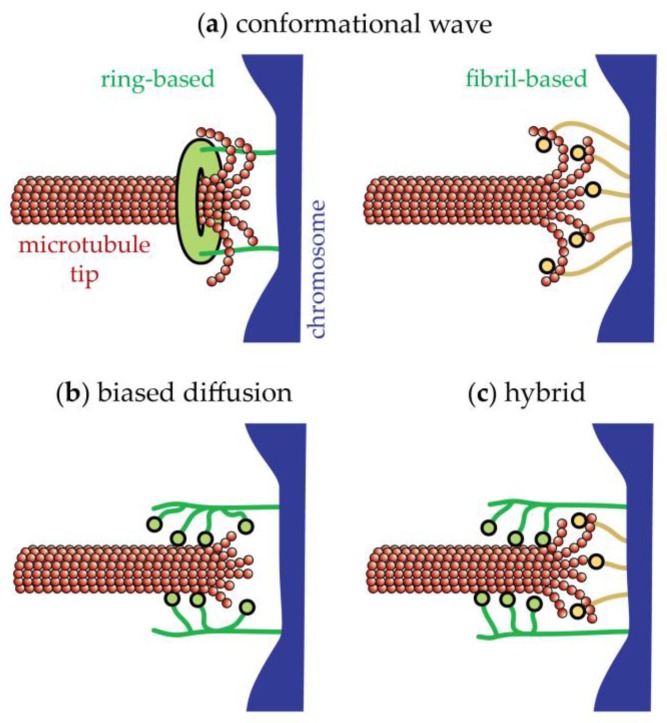Figure 8.
Models for tip-coupling without conventional motor activity. (a) Two versions of the conformational wave mechanism are shown, one (ring-based) in which elements of the kinetochore assemble into a microtubule encircling ring that is hooked by curling protofilaments, and another (fibril-based) where fibrillar kinetochore elements bind independently to the curling protofilaments. In either case, the curling action of the protofilaments exerts pulling force (directed leftward in the diagrams) on the chromosome. (b) In the biased diffusion mechanism, an array of kinetochore fibrils rapidly binds and unbinds the microtubule lattice at or near the tip. Thermal fluctuations of the chromosome that allow more fibrils to bind (leftward movements of the chromosome in the diagram) are favored by the energy of binding those elements. This biased thermal movement produces a thermodynamic pulling force. (c) A hybrid model is also shown, where force is produced by a combination of protofilament curling and biased thermal fluctuations. These diagrams are adapted from [159], and are displayed with permission from Elsevier Publishing (http://www.sciencedirect.com/science/journal/09628924).

